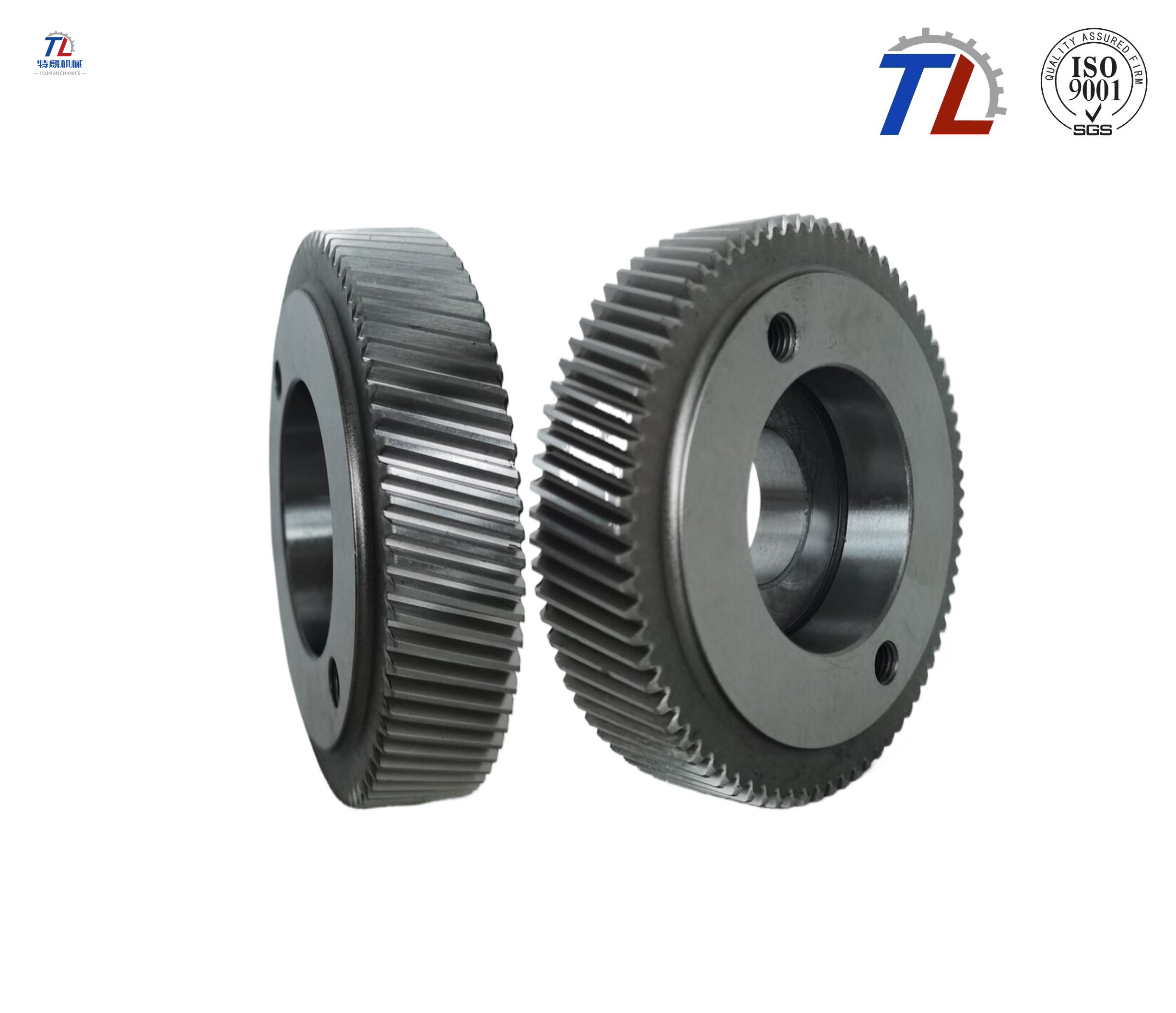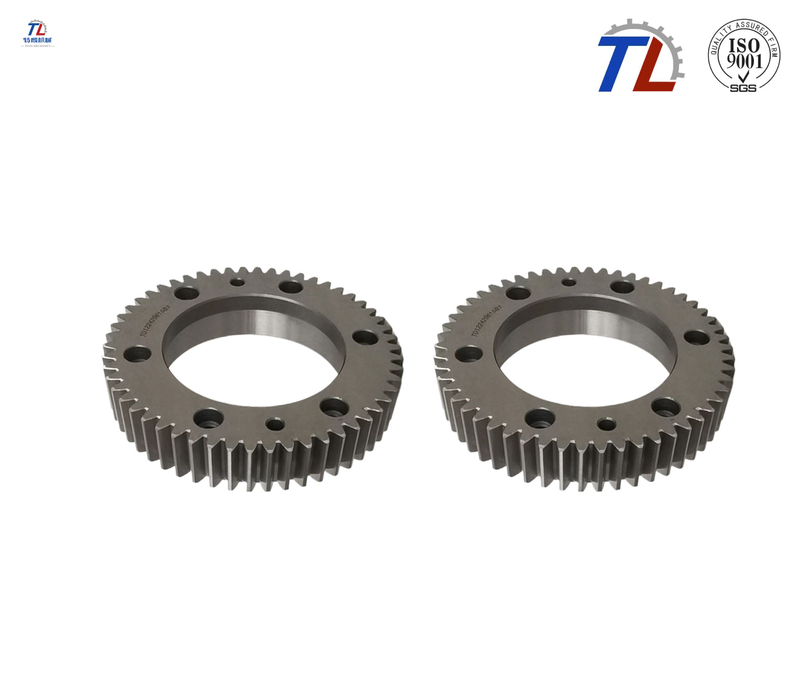- All
- Product Name
- Product Keyword
- Product Model
- Product Summary
- Product Description
- Multi Field Search
Views: 0 Author: Site Editor Publish Time: 2025-07-14 Origin: Site









When it comes to manufacturing high-performance gears, selecting the right material is critical for achieving optimal performance, longevity, and efficiency. Whether you are working with helical gears, bevel gears, or even spur gears, the material you choose can significantly impact the overall functionality and durability of the gears. But with so many options available, how do you determine which material is best suited for your gears?
In this article, we’ll explore the different materials used in the production of helical and bevel gears, discuss their properties, and provide insights into the factors that influence material selection. If you're a designer or engineer in the machinery or automotive industry, understanding gear materials will help you make informed decisions and select the right materials for your gear systems.

Before diving into materials, let’s first take a quick look at the types of gears commonly used in various industrial applications.
Spur gears are one of the most common types of gears. These gears have straight teeth and are mounted on parallel shafts. They are ideal for applications where the torque and speed need to be transmitted between parallel shafts. While they are efficient and simple to manufacture, they generate more noise and vibration than other gear types, such as helical gears.
Unlike spur gears, helical gears feature teeth that are cut at an angle to the shaft, creating a more gradual and smooth mesh. This design results in less noise and better load capacity than spur gears, making helical gears ideal for high-speed applications where smooth operation is critical.
Bevel gears are used to transmit power between intersecting shafts, typically at a 90-degree angle. They come in different forms, such as straight, spiral, and hypoid bevel gears, each suitable for different applications. Bevel gears are essential in machinery where the direction of rotation needs to change.
Each type of gear—spur, helical, and bevel—has its unique advantages and use cases, and choosing the right material for these gears can dramatically improve system efficiency.
Selecting the right material for gears involves balancing multiple factors, such as strength, wear resistance, corrosion resistance, machinability, and cost. The best material will depend on the specific application and operational environment of the gears.
Here are some of the primary considerations when selecting gear materials:
Strength and Load Capacity – Gears are subject to varying levels of load depending on the system. Materials with high tensile strength and load-bearing capacity are essential for gears subjected to heavy-duty applications.
Wear Resistance – Gears experience continuous wear from the constant meshing of teeth. Materials with excellent wear resistance ensure that the gears can withstand long-term use without significant degradation.
Corrosion Resistance – In certain environments, such as marine or chemical applications, gears are exposed to moisture and corrosive substances. Materials with strong corrosion resistance are essential in these cases to prevent premature failure.
Machinability – The ease with which a material can be cut, shaped, or machined is an important factor in gear production. Materials that are easy to machine can reduce manufacturing costs and production times.
Cost – Finally, the material’s cost will also play a role in its selection, especially for mass-produced gears where budget constraints are a concern.
Now, let’s explore the materials commonly used for helical gears and bevel gears.
Steel is one of the most commonly used materials for helical and bevel gears due to its strength, durability, and versatility. Steel alloys can be customized to meet the specific needs of different gear applications.
Carbon steel is often used for gears that are subjected to moderate loads. It’s easy to machine, affordable, and can be hardened to improve wear resistance. This makes it a popular choice for spur gears, helical gears, and bevel gears that operate under standard conditions.
Alloy steels, such as 4140 steel, offer superior strength and resistance to wear and fatigue. They are often used in high-stress applications where durability is essential. When used in helical gears and bevel gears, alloy steels can withstand heavy loads and ensure smooth operation over extended periods.
For gears that will be exposed to corrosive environments, stainless steel is an excellent choice. Stainless steels, like 304 or 316 alloys, offer exceptional resistance to rust and corrosion, making them suitable for use in industries like food processing or marine applications. However, stainless steel may not offer the same level of wear resistance as carbon or alloy steels, so it’s important to consider the specific requirements of the application.
Cast iron is a popular choice for bevel gears that do not experience excessively high loads or speeds. Cast iron is known for its excellent castability, wear resistance, and vibration-damping properties. It’s particularly useful for bevel gears in machinery that operates under low to moderate loads.
The major downside of cast iron is its brittleness, which can make it less suitable for gears exposed to heavy impacts or shock loading. However, in many applications, cast iron’s combination of durability and cost-effectiveness makes it a strong candidate.
Copper alloys, including bronze and brass, are ideal materials for gears that need to operate in environments subject to corrosion or for those requiring a low friction coefficient. These alloys also have antimicrobial properties, which make them suitable for applications in the food industry or other sensitive environments.
Bronze gears are especially effective for bevel gears and helical gears that operate under high-load and high-wear conditions, such as worm gears. Bronze offers excellent wear resistance and can handle high friction without significant damage.
For applications that require a lightweight gear, aluminum alloys are a great choice. Aluminum is about one-third the weight of steel, making it an ideal material for gears in applications where weight reduction is a priority. Aluminum alloys also offer good corrosion resistance and machinability, which can make production more efficient.
However, aluminum gears are typically not suitable for heavy-duty applications. They are more commonly used in smaller, less demanding systems where weight and corrosion resistance are prioritized.
In applications where helical gears and bevel gears need to be lightweight, non-corrosive, and relatively inexpensive, plastic gears made from materials like acetal (POM) or nylon can be a viable option. These materials offer lower noise levels and are self-lubricating, which makes them ideal for low-load and low-speed applications.
However, plastic gears generally do not have the same load-carrying capacity or wear resistance as metal gears, so they are typically used in less demanding applications.

The best material for helical gears and bevel gears depends on several factors, including the load requirements, operating environment, and manufacturing capabilities. Here are some key takeaways for choosing the right material for your gears:
For helical gears used in high-load, high-speed applications, alloy steel or stainless steel is often the best choice.
For bevel gears in moderate-load applications, cast iron or bronze might be more cost-effective.
In corrosive environments, stainless steel or bronze would be ideal materials to ensure long-lasting performance.
For lightweight, low-load applications, aluminum alloys or plastic gears can be a great option.
Selecting the best material for helical gears and bevel gears is a vital step in ensuring optimal performance, durability, and efficiency. While metals like steel and cast iron are commonly used for heavy-duty gears, materials like copper alloys and plastics can also be beneficial in certain specialized applications. By understanding the properties of different materials and considering the requirements of your specific application, you can make a more informed decision.
At Guangzhou Telin Machinery Parts Co., we understand the importance of selecting the right gear material. Our products are manufactured with precision and care to meet the highest industry standards. Whether you need helical gears, bevel gears, or spur gears, we offer high-quality, durable solutions tailored to your needs. Reach out to us today for reliable, cost-effective gear solutions for your business.
A: Helical gears are used to transmit motion between parallel shafts, while bevel gears are designed to change the direction of motion between intersecting shafts.
A: Plastic gears are not ideal for high-load applications. They are better suited for low-load, low-speed applications.
A: Helical gears have angled teeth that engage more gradually than spur gears, resulting in less vibration and noise.
A: Stainless steel or bronze are ideal materials for gears exposed to corrosive environments, as they offer excellent resistance to rust and corrosion.
A: The best material depends on factors such as load capacity, speed, environmental conditions, and cost. For high-load applications, alloy steel is often preferred, while aluminum alloys or plastics may be suitable for lightweight, low-load applications.